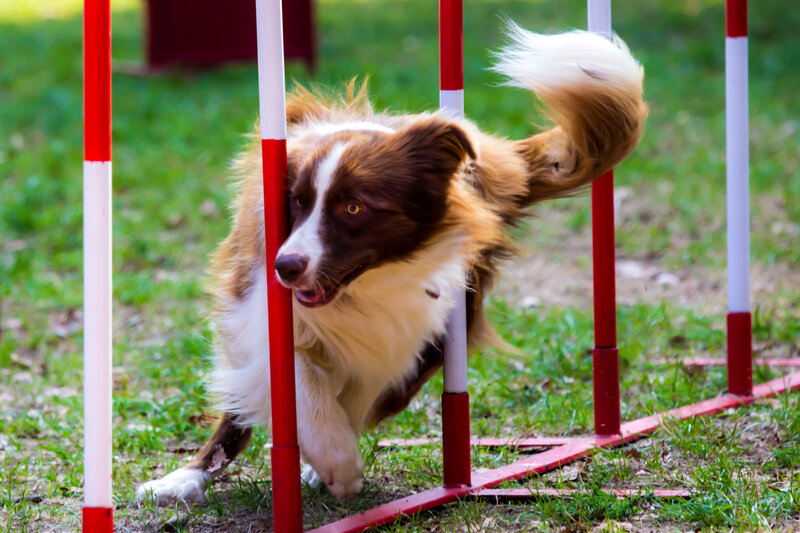
The AKC (American Kennel Club) defines agility training as:
...a sport where you direct your dog through a pre-set obstacle course within a certain time limit. Courses typically have between 14-20 obstacles, which can include tunnels, weave poles, tire jumps, seesaws, and pause tables where the dog must stop for a set amount of time...All of this is done with your dog relying solely on the cues and body language you use to direct them on course.
While it may seem like agility training is “good for the dog,” the Alternative Canine Training Team spends our days witnessing how great it is for the human companions, too.
Things worth noting:
Finally, safety is always the priority. Get approval from your veterinarian before beginning any agility training exercises to make sure your dog can handle it physically and emotionally.
Some of the many benefits of practicing agility training exercises with your dog(s) include:
Sure, the professional agility courses have lots of fancy equipment. The DIY home agility course can be created using things you already have around the house or can find for free online.
Before you begin, remember the #1 rule: Agility training is all about fun. Don’t stress! Be patient. Set small expectations. Prepare to work in baby steps and then delight in any bigger learning that may happen along the way.
Teaching your dog to touch his or her nose to your hand (and then a specific target) on command gets your dog used to making specific movements in response to your body signals.
Start by training your dog to touch his/her nose to the palm of your flat hand in various positions, rewarding him/her with a small training treat. When s/he gets that down, you can begin migrating your hand towards designated targets. Eventually, your hand will guide his/her nose to specified “contact zones” and direct movement through the agility course.
Jumping through a hoop is one of the oldest and most beloved tricks in the dog book. It begins with getting your dog to walk through the hoop and continues by slowly raising the hoop over time so that s/he is hopping and then gently leaping through it.
Always err on the side of “lower” rather than “higher” to ensure your dog doesn’t injure him/herself when jumping and landing. Attending an agility course with a professional trainer will help you understand the ideal height for your dog’s size, weight, and ability.
Create your own balance beam with two solid structures that are fairly low to the ground to begin, with a plank securely connected between them. Here is an example of what that looks like. Work to get your dog up to the first platform and reward him/her with a treat. Then patiently guide him/her to walk across the plank to the other side, where s/he can perform a “sit” or a “contact/target touch” to finish the move.
Over time, you can raise the plank a bit. Once s/he’s got that down, you can use a similar idea to create a secure teeter-totter and teach your dog to walk up one side and continue walking as it “teeters.”
Visit this DIY Post, How to Build a 3-Part Dog Agility Course which tells you how to create three of the most common agility course obstacles: A-frame climbing wall, the teeter-totter, and the weave poles.
Your ability to “handle” your dog is essential to agility course success, but it’s also essential whenever you are out in public with your dog on a leash. Examples of “handling” include getting your dog to understand voice commands and nonverbal cues for:
All of these build relational and coordination skills that serve you both in public as well as on an agility course.
In a formal agility course, there are several places where dogs have to “wrap around” tight curves, whether it be around a single obstacle or to weave themselves through a line of poles. To get dogs used to this command and motion, use a trash can, a cone, or a weighted 5-gallon bucket.
Start by rewarding his/her approach to the object and then work towards having your dog wrap independently around it (like a horse around a barrel) and return back to you. Once s/he’s achieved that task, you can begin adding those objects up or using the DIY link above to make a set of weave poles.
If you and your dog love agility training as much as we do, contact us here at Alternative Canine Training, and let’s talk about group classes or competition training to help you both deepen into a rewarding activity that lasts a lifetime.